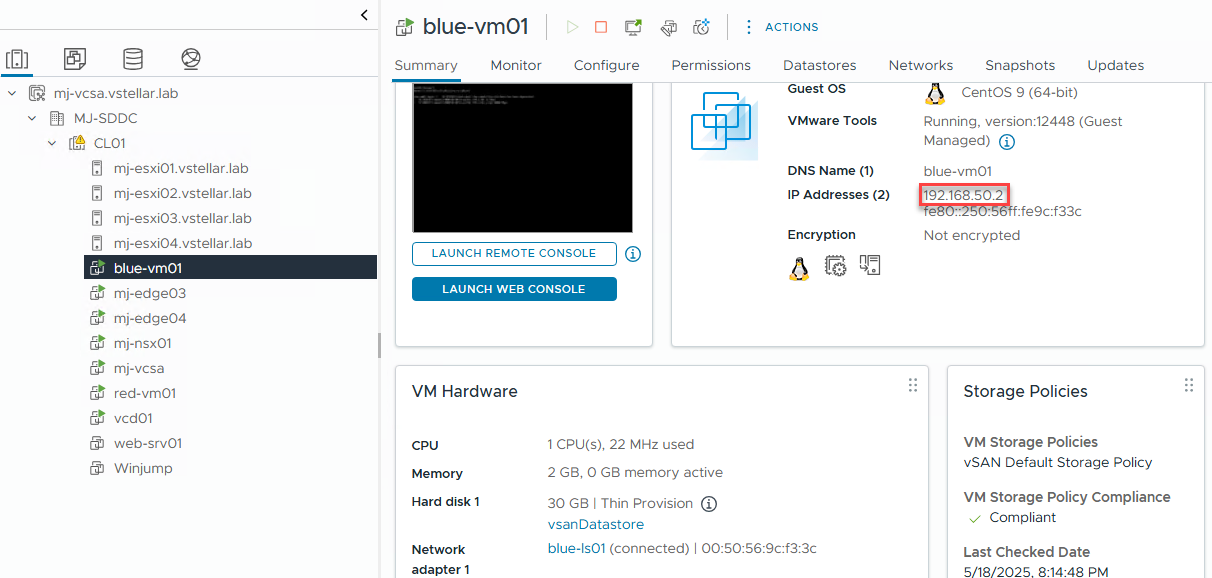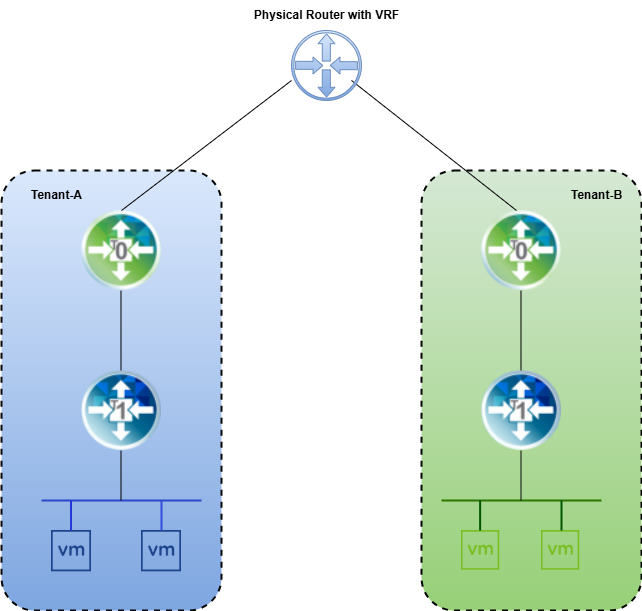Welcome to part-2 of the NSX VRF series. Part 1 of this series discussed VRF architecture and its use cases and the advantages that VRF offers over traditional routing isolation techniques. In this post, I will demonstrate VRF configuration validation to ensure things are working as expected.
The following configuration was done in vSphere before VRF validation:
- VRF-Red VM is deployed and connected to segment “red-ls01” and has IP 192.168.40.2
- VRF-Blue VM is deployed and connected to segment “blue-ls01” and has IP 192.168.50.2
Connectivity Test
The blue VRF VM can:
- Ping its default gateway.
- Uplink interface used for BGP peering.
- An IP from the physical network.
However, the Blue VRF VM can’t ping the Red VRF gateway or any of its VMs.
The same tests were performed on the Red VFR VM and validated that it can’t reach the Blue VRF gateway or its VM.
You can run similar tests using the NSX Traceflow tool.… Read More









